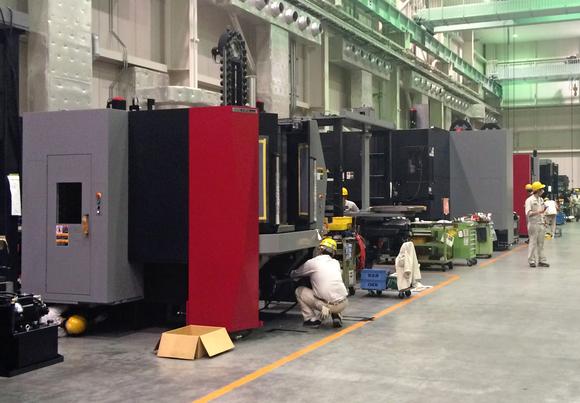With demand for machine tools still weak in China and a drop-off in Japan, capital investment is losing momentum worldwide, according to a Nikkei Asian Review report. Machine tool orders related to smartphone production have languished, with few prospects of rebounding. Even the automotive and aircraft industries appear to be curtailing spending after investing aggressively in equipment.
The Japan Machine Tool Builders' Association reported Tuesday a 19.6 percent year-on-year decrease in orders to 104.4 billion yen ($1.02 billion) in July, a 12th straight month of declines for this gauge of capital investment outlook. Domestic orders shrank 14.3 percent to 51.3 billion yen, while exports tumbled 24.2 percent to 53.1 billion yen -- falling below 55 billion yen for the first time in 39 months.
"Demand from automotive companies in the U.S. plummeted in July, losing strength," a staffer at Makino Milling Machine said. Orders from the U.S. account for roughly 30 percent of Makino Milling's sales, and the company's exports declined 30 percent on the year in July. The official expressed concern about the outlook toward the end of the year.

Japanese machine tool makers see declining demand domestically and abroad.
Related Glossary Terms
- gang cutting ( milling)
gang cutting ( milling)
Machining with several cutters mounted on a single arbor, generally for simultaneous cutting.
- milling
milling
Machining operation in which metal or other material is removed by applying power to a rotating cutter. In vertical milling, the cutting tool is mounted vertically on the spindle. In horizontal milling, the cutting tool is mounted horizontally, either directly on the spindle or on an arbor. Horizontal milling is further broken down into conventional milling, where the cutter rotates opposite the direction of feed, or “up” into the workpiece; and climb milling, where the cutter rotates in the direction of feed, or “down” into the workpiece. Milling operations include plane or surface milling, endmilling, facemilling, angle milling, form milling and profiling.
- milling machine ( mill)
milling machine ( mill)
Runs endmills and arbor-mounted milling cutters. Features include a head with a spindle that drives the cutters; a column, knee and table that provide motion in the three Cartesian axes; and a base that supports the components and houses the cutting-fluid pump and reservoir. The work is mounted on the table and fed into the rotating cutter or endmill to accomplish the milling steps; vertical milling machines also feed endmills into the work by means of a spindle-mounted quill. Models range from small manual machines to big bed-type and duplex mills. All take one of three basic forms: vertical, horizontal or convertible horizontal/vertical. Vertical machines may be knee-type (the table is mounted on a knee that can be elevated) or bed-type (the table is securely supported and only moves horizontally). In general, horizontal machines are bigger and more powerful, while vertical machines are lighter but more versatile and easier to set up and operate.
